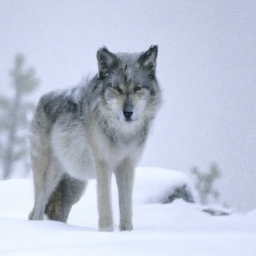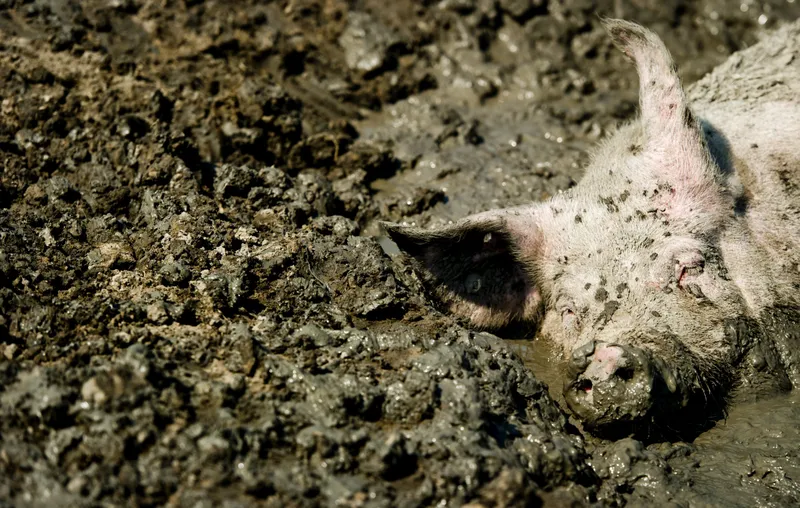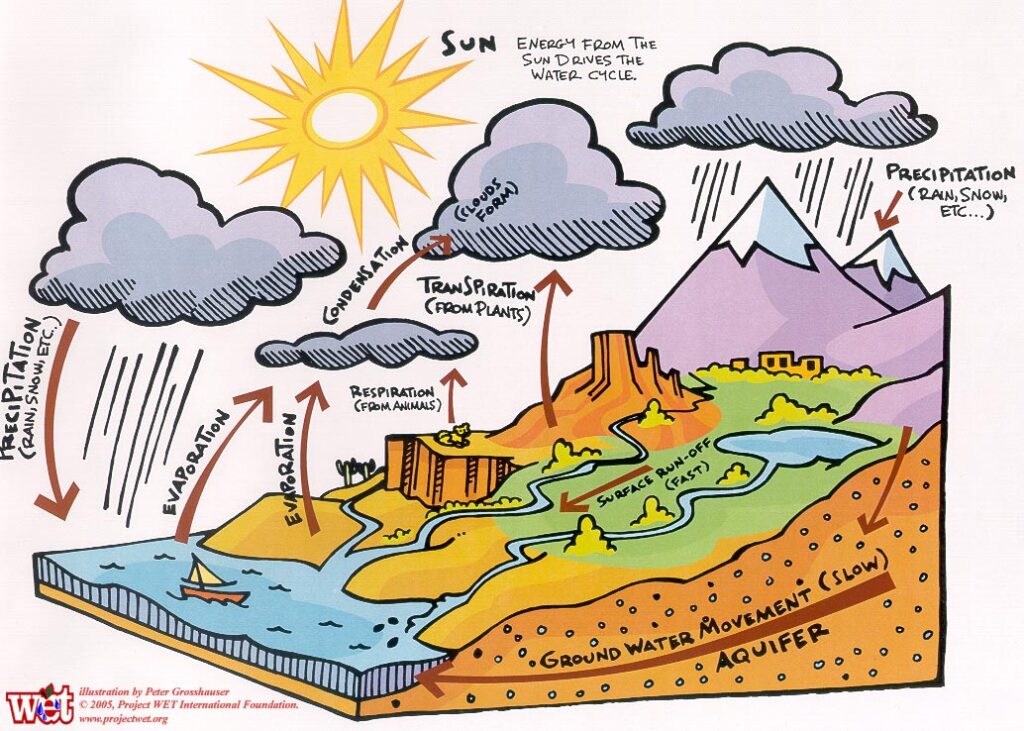
Imagine a scorching summer day, the sun beating down relentlessly. As you search for relief, you notice animals panting and plants withering in the heat. But have you ever wondered how they manage to stay cool in such intense conditions? Look no further than evaporation, a natural phenomenon that comes to their rescue. In this article, we will explore the fascinating ways in which evaporation helps animals and plants combat the sweltering temperatures, allowing them to thrive even in the harshest of climates.
This image is property of s3-us-west-1.amazonaws.com.
Understanding evaporation
Definition of evaporation
Evaporation is a natural process by which a liquid, such as water, transforms from its liquid state into a gaseous state. It occurs when the molecules of the liquid gain enough energy to break their intermolecular bonds and escape into the surrounding environment as vapor. This process occurs at the surface of the liquid and is influenced by factors such as temperature, humidity, and air movement.
Evaporation process in nature
Evaporation is a fundamental process in nature that plays a crucial role in various natural phenomena. It is a key component of the water cycle, where water evaporates from bodies of water, such as lakes and oceans, and eventually condenses into clouds before returning to the Earth as precipitation. Evaporation also occurs from the surfaces of plants, known as transpiration, contributing to the movement of water through the ecosystem.
Role of evaporation in temperature regulation
How evaporative cooling works
Evaporation plays a vital role in temperature regulation, particularly in animals and plants. Evaporative cooling occurs when the energy required for evaporation is drawn from the surrounding environment, resulting in a decrease in temperature. This is because as the liquid molecules evaporate, they take away heat energy from the surface, thus cooling the object or organism.
Heat loss through evaporation
The process of evaporation facilitates heat loss from an object or organism. When a liquid evaporates, heat energy is required to overcome the intermolecular forces between the liquid molecules. This heat energy, known as latent heat of vaporization, comes from the surrounding environment, resulting in a decrease in temperature. Through evaporation, animals and plants can dissipate excess heat and maintain optimal body temperature.
Evaporation in animals
Evaporation through perspiration
Animals, especially mammals, have developed mechanisms to use evaporation for cooling purposes. One such mechanism is perspiration, where sweat glands produce liquid sweat on the skin’s surface. As the sweat evaporates, it absorbs heat from the body, cooling down the skin and reducing the overall body temperature. This is why sweating is commonly observed in mammals during physical activities or when exposed to high temperatures.
Animals’ behavioral adaptations to enhance evaporation
Some animals exhibit behavioral adaptations to enhance evaporation and increase cooling efficiency. For example, many mammals, such as dogs, pant when they are hot. Panting increases air movement over moist surfaces, such as the tongue, facilitating faster evaporation and heat loss. Similarly, some animals, like elephants, spray water on their bodies, which evaporates and brings down their body temperature.
Role of fur and feathers in evaporation
The presence of fur or feathers in animals also influences evaporation rates. In hot conditions, some animals may fluff their fur or feathers to increase air circulation, allowing faster evaporation of sweat or moisture on their bodies. This serves as an additional cooling mechanism, as the air movement aids in heat transfer and promotes evaporation, assisting animals in maintaining a suitable body temperature.
Evaporation in plants
Evaporation through transpiration
Plants rely on a process called transpiration to transport water from their roots to their leaves and release water vapor into the atmosphere. Transpiration is similar to evaporation in animals but occurs through specialized structures called stomata, which are tiny openings on the surface of leaves. As water evaporates from the stomata, it creates a suction force that pulls water up through the plant’s vascular system, allowing for nutrient distribution and cooling.
Role of leaves and stomata in evaporation
Leaves play a significant role in evaporation as they contain numerous stomata for gas exchange and water vapor release. The stomata can open and close, regulating the rate of transpiration and evaporation. In hot and dry conditions, plants may partially or fully close their stomata to reduce water loss and prevent dehydration. This control over evaporation enables plants to adapt to varying environmental conditions and optimize their water usage.
Plant species variations in evaporation rates
Different plant species exhibit variations in their evaporation rates due to various factors such as leaf structure, stomatal density, and plant physiology. Some plants have adapted to arid environments and have evolved mechanisms to minimize water loss through reduced stomatal openings or by having waxy leaves that act as a barrier against evaporation. Other plants in moist habitats may have larger stomata and higher evaporation rates to facilitate higher water absorption.

This image is property of th-thumbnailer.cdn-si-edu.com.
Adaptive mechanisms in animals for evaporation
Sweating and panting in mammals
Sweating is a prominent mechanism employed by mammals to cool their bodies through evaporation. Sweat glands release liquid sweat on the skin, which evaporates and draws heat away from the body. Mammals with a higher density of sweat glands, such as humans, can efficiently regulate their body temperature through sweating. Panting is another mechanism used by mammals that helps increase the surface area for evaporation and enhances cooling efficiency.
Saliva spreading in birds and reptiles
Birds and reptiles have their ways of utilizing evaporation for cooling. Some birds, particularly those with bare skin patches, spread their saliva on these patches, promoting evaporation and cooling down their bodies. In reptiles, such as lizards, spreading saliva or water on their skin creates a similar effect by facilitating evaporation and lowering their body temperature. These adaptive mechanisms allow birds and reptiles to survive in hot environments.
Adaptive mechanisms in plants for evaporation
Stomatal regulation in water loss
Plants have evolved the ability to regulate their stomatal openings to control water loss through evaporation. Stomata can respond to environmental cues, such as light intensity and humidity, and adjust their aperture accordingly. In times of water scarcity or high temperatures, plants can close their stomata partially or completely to minimize evaporation and conserve water. This adaptive mechanism ensures the survival of plants in challenging conditions.
Morphological adaptations like waxy leaves, spines
Plants have developed a range of morphological adaptations to reduce water loss through evaporation. Some plants in arid environments, such as cacti, have waxy or thick leaves that serve as a barrier, preventing excessive evaporation. Other plants, like certain desert succulents, have evolved spines that reduce air movement around the plant, thus minimizing water loss through evaporation. These adaptations enable plants to thrive in regions with limited water availability.

This image is property of www.juntadeandalucia.es.
Evaporative cooling in desert animals and plants
Desert fauna and evaporative cooling
Desert animals face extreme heat, and evaporative cooling plays a crucial role in their survival. Many desert animals, such as kangaroo rats and camels, have highly concentrated urine, which minimizes water loss and conserves body fluids. Some desert rodents also have the ability to produce dry feces, reducing the need for water excretion. These mechanisms mitigate water loss through evaporation and allow desert fauna to cope with the harsh desert environment.
Cacti and other desert plants’ evaporative cooling methods
Cacti and other desert plants have evolved specialized methods to adapt to the arid conditions and utilize evaporative cooling. The unique structure of the cactus allows it to store water in its fleshy stems, minimizing evaporative water loss. Additionally, cacti have a reduced surface area and modified stomata to limit the loss of precious water through evaporation. These adaptations enable cacti and other desert plants to thrive in the extreme dryness of desert regions.
Effects of evaporation on ecosystem
Evaporation’s impact on the water cycle
Evaporation plays a crucial role in the water cycle, where it acts as a mechanism for transferring water from the Earth’s surface back into the atmosphere. As water evaporates from oceans, lakes, rivers, and plants, it forms water vapor in the atmosphere. This water vapor eventually condenses to form clouds and falls back to the Earth as precipitation. Without evaporation, the water cycle would be disrupted, affecting the availability of freshwater resources and ecosystem stability.
Evaporation’s impact on microclimates
Evaporation influences microclimates within an ecosystem, leading to variations in temperature and humidity. As water evaporates from bodies of water or transpires from plants, it releases moisture into the air. This moisture affects the surrounding air’s humidity level, which, in turn, influences temperature regulation. Areas with high rates of evaporation, such as wetlands or dense forests, tend to have cooler microclimates due to the constant release of moisture into the atmosphere.

This image is property of ewscripps.brightspotcdn.com.
Evaporation and climate adaptation
Animals’ climate adaptation via evaporation
Evaporation plays a crucial role in animals’ adaptation to different climates. Animals living in hot and arid environments have evolved mechanisms like sweating, panting, and behavioral adaptations to cope with high temperatures. These adaptive mechanisms allow them to regulate their body temperature through evaporative cooling processes. Similarly, animals in cold climates have adaptations to prevent excessive evaporation, such as thick fur or blubber, which help retain heat and minimize heat loss.
Plants’ climate adaptation through changes in evaporation rates
Plants exhibit various adaptations to cope with different climate conditions through controlling evaporation rates. In arid regions, plants have developed mechanisms to reduce water loss, such as smaller leaves, reduced stomatal density, or specialized leaf structures. Conversely, plants in wet environments may have larger leaves and higher stomatal densities to maximize water uptake and increase evaporation rates. These adaptations enable plants to optimize their water usage and thrive in varying climate conditions.
Constraints of evaporation as a cooling mechanism
Water availability and evaporative cooling
One of the primary constraints of evaporation as a cooling mechanism is the availability of water. In arid environments or during droughts, water scarcity limits the effectiveness of evaporative cooling for both animals and plants. Insufficient water supply can result in dehydration and difficulty in maintaining optimal body temperature or sustaining plant growth. The availability of water resources greatly affects the viability of evaporation as a cooling mechanism in different ecosystems.
Energy costs and efficiency of evaporative cooling
Evaporative cooling requires a significant amount of energy, especially for animals. Producing sweat or spreading saliva for evaporation consumes energy resources. Additionally, evaporation can lead to water loss, which comes with its own energy costs for animals and plants. Efficient use of water and energy is vital for organisms relying on evaporation for cooling, as excessive water loss or energy expenditure can negatively impact their overall well-being and survival.
In conclusion, evaporation is a fundamental process that plays a crucial role in temperature regulation for both animals and plants. Through mechanisms such as perspiration, transpiration, and adaptive behaviors, organisms utilize evaporation for evaporative cooling, helping them maintain suitable body temperatures and thrive in various environments. However, the effectiveness of evaporation as a cooling mechanism is influenced by factors such as water availability, energy costs, and the specific adaptations of each organism. Understanding the role of evaporation in temperature regulation provides valuable insights into the complex interactions between organisms and their environments.





